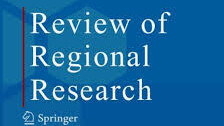Article on women in management positions published

The underrepresentation of women in management positions remains a significant barrier to achieving gender equality. While previous research has examined how national institutional contexts influence women’s career choices, the role of regional contexts has been largely overlooked. This study addresses this gap by analyzing how regional institutions affect the share of women in management roles within mid-sized firms. We argue that stronger regional labor market integration for women facilitates their progression into management positions, thereby increasing their representation in firms’ leadership. Furthermore, we differentiate between family and non-family firms, suggesting that regional institutional effects are less influential in family firms. To assess the regional labor market integration of women, we develop an indicator comprising three key components: the female employment ratio, the childcare participation rate, and the proportion of fathers receiving parental allowance. Analyzing a large sample of mid-sized German firms (50 to 500 employees) across 400 regions, our regression results show that regional labor market integration significantly affects women’s representation in management. However, this effect is weaker in family firms compared to non-family firms. These findings suggest that research on women in management and their influence on firm outcomes should account for the role of regional institutions.